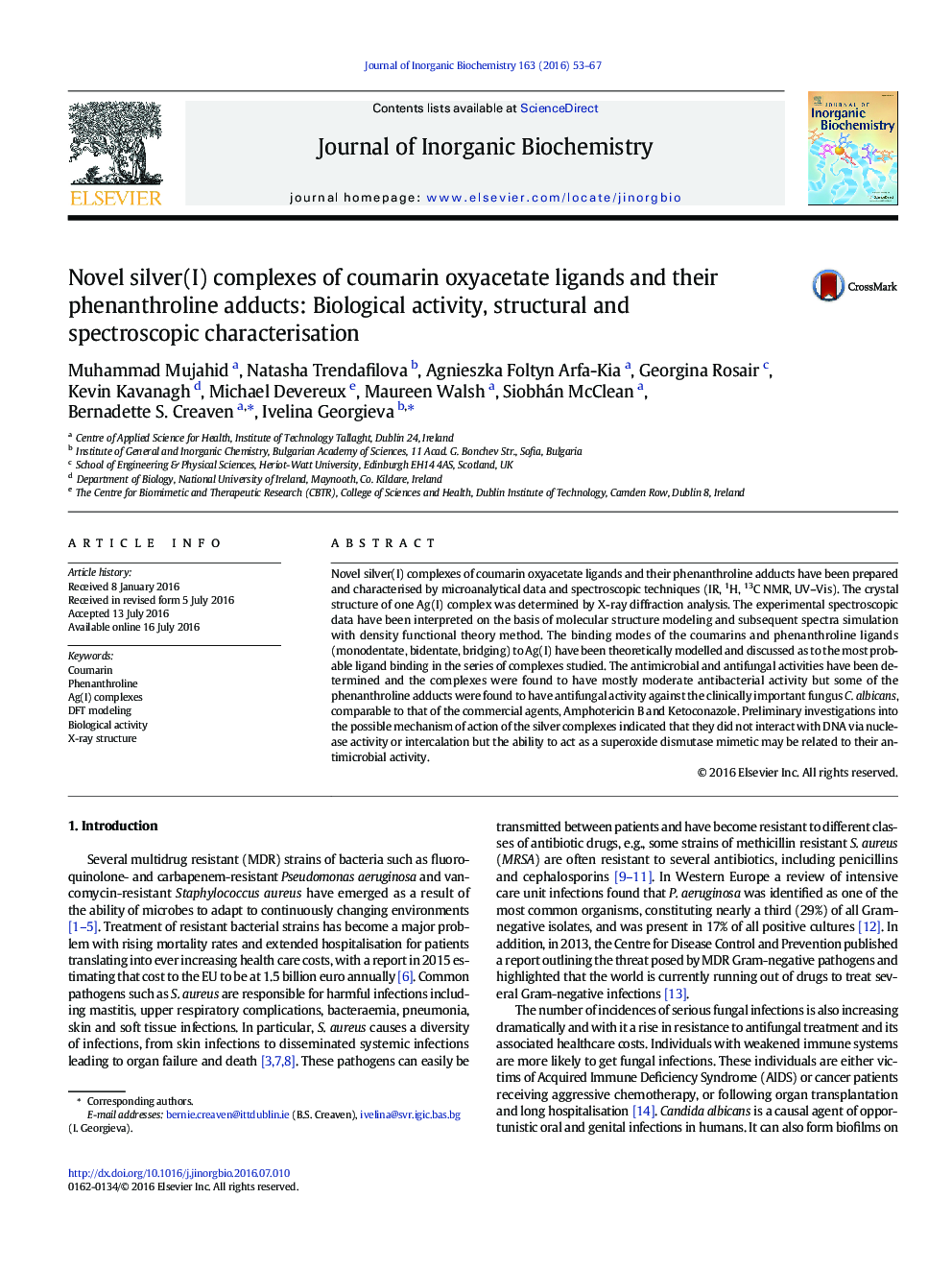| Article ID | Journal | Published Year | Pages | File Type |
|---|---|---|---|---|
| 1315819 | Journal of Inorganic Biochemistry | 2016 | 15 Pages |
•Molecular modeling studies of silver(I) complexes established their binding modes.•The complexes had antifungal and cytotoxic activity but moderate antibacterial activity.•Complexes don't appear to interact via DNA intercalation or have nuclease activity.•Their ability to act as superoxide dismutase mimetics may be linked to their chemotherapeutic activity.
Novel silver(I) complexes of coumarin oxyacetate ligands and their phenanthroline adducts have been prepared and characterised by microanalytical data and spectroscopic techniques (IR, 1H, 13C NMR, UV–Vis). The crystal structure of one Ag(I) complex was determined by X-ray diffraction analysis. The experimental spectroscopic data have been interpreted on the basis of molecular structure modeling and subsequent spectra simulation with density functional theory method. The binding modes of the coumarins and phenanthroline ligands (monodentate, bidentate, bridging) to Ag(I) have been theoretically modelled and discussed as to the most probable ligand binding in the series of complexes studied. The antimicrobial and antifungal activities have been determined and the complexes were found to have mostly moderate antibacterial activity but some of the phenanthroline adducts were found to have antifungal activity against the clinically important fungus C. albicans, comparable to that of the commercial agents, Amphotericin B and Ketoconazole. Preliminary investigations into the possible mechanism of action of the silver complexes indicated that they did not interact with DNA via nuclease activity or intercalation but the ability to act as a superoxide dismutase mimetic may be related to their antimicrobial activity.
Graphical abstractA series of silver(I) complexes of coumarin oxyacetates and their phenanthroline adducts were synthesized and fully characterised by spectroscopic techniques, and their biological activity assessed. The experimental data were interpreted on the basis of molecular modeling and subsequent spectra simulation with density functional theory method.Figure optionsDownload full-size imageDownload as PowerPoint slide
